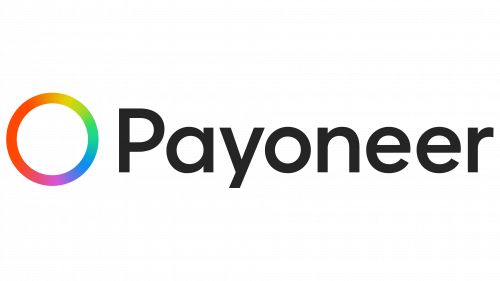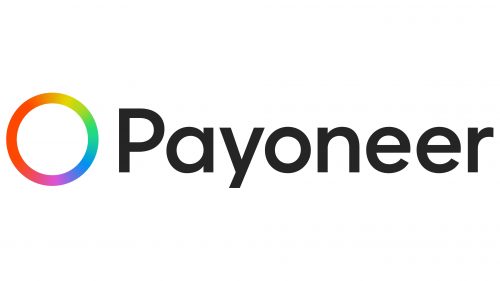The Payoneer logo represents the integrity and stability of the company’s financial solutions to its users worldwide. The emblem reflects a circle of clients interacting with each other within a dynamically evolving system that operates without interruptions. The core idea behind the design is the convenience and versatility accessible to large businesses and freelancers, emphasizing its global focus. The symbol depicted in the visual mark highlights the simplicity of currency exchange and money transfers across the globe.
Payoneer: Brand overview
Payoneer’s history began in 2005 when Yuval Tal founded the company in New York City. Tal, an entrepreneur with experience in the financial sector, recognized an opportunity to create a global payments network to simplify cross-border transactions for businesses and freelancers. The initial goal was to provide companies with an easy way to pay their international contractors and employees. The idea quickly gained traction with the growing number of digital nomads and online freelancers.
In 2007, the company raised $2 million in funding from Carmel Ventures, which allowed it to expand its team and develop more complex financial solutions.
A major milestone came in 2008 with the launch of a MasterCard debit card. This innovation allowed users to receive payments in a virtual account and withdraw cash at ATMs worldwide. It became especially popular among freelancers with global clients.
In 2010, the company secured $4 million in Series B funding from Greylock Partners and Carly Wittner, accelerating its geographic expansion.
By 2011, the Bulk Payouts program was introduced, enabling companies to efficiently process multiple international payments simultaneously. This caught the attention of major online marketplaces and freelance platforms.
2012 Susquehanna Growth Equity and other investors contributed $16 million, allowing for further development of new products and an expanded global reach.
Growth continued in 2013, opening offices in key Asian markets, including the Philippines and Japan.
The Bank Partnership Program was launched in 2014. This program enables the company to offer local banking details in multiple countries, making cross-border payments easier for its users.
A pivotal moment came in 2016 when Technology Crossover Ventures invested $180 million. This funding fueled further expansion and the development of new financial products.
2017, the company introduced a working capital product that allows customers access to short-term loans. This addition marked a significant step in broadening its financial services portfolio.
The following year, the company launched a service for banks, enabling financial institutions to offer cross-border payment services to their corporate clients and opening a new growth avenue.
In 2019, expansion into new regions continued, and the company strengthened its presence in the e-commerce sector by offering tailored solutions for online sellers.
A major shift occurred in 2020 when plans to go public through a merger with FTAC Olympus Acquisition Corp., a special purpose acquisition company (SPAC), were announced.
In June 2021, the company officially became publicly traded on the Nasdaq under the ticker PAYO, marking a significant moment in its history and providing additional resources for future growth and innovation.
As of 2023, the company continues to expand its services, focusing on providing new financial solutions for small and medium-sized businesses and strengthening its presence in emerging markets.
The story of this global payments provider highlights its journey from a small startup to a major player in the financial industry. It has solidified its role in facilitating international trade and transactions through consistent innovation, a customer-first approach, and strategic partnerships.
Meaning and History
What is Payoneer?
This is a global financial services provider that has established itself in the field of cross-border payments. Focusing on delivering digital payment solutions and international money transfers, the brand has become an essential resource for independent contractors, online retailers, and companies operating in the global digital economy. The platform offers various services, such as prepaid debit cards, multi-currency accounts, and streamlined payment methods for businesses and marketplaces. Its primary advantage lies in simplifying complex international transactions, allowing users to receive payments from companies worldwide as easily as if they had a local bank account. This makes the platform popular among freelancers working with overseas clients and online retailers conducting business in international markets.
Before 2021
The company emblem represents the name, conveying the brand’s key idea. The name was chosen because it combined two words, “Pay” and “Pioneer,” highlighting the company’s primary mission of providing international payment and transfer services. The word “Pioneer” embodies the concept of innovation, reflecting the company’s forward-thinking approach to financial technologies and solutions. This brand aims to be a leader and pioneer in global payments, offering its clients modern and convenient methods for managing financial resources worldwide.
The most attention in the logo is given to the letter “y,” creatively transformed into a symbol resembling a checkmark. This design choice symbolizes confirmation, confidence, and reliability. However, there is another interpretation: its shape resembles the silhouette of a bird, which is associated with ease and swiftness, metaphorically reflecting the speed of money transfers within the Payoneer system. This interpretation adds meaning to the logo, connecting it with fast and unrestricted cross-border transactions.
Orange represents the connection between people and the support the company provides its users in purchases and transfers. This color conveys friendliness and openness, creating a sense of trust and reliability in every transaction. The orange accent helps to express the idea that Payoneer simplifies the process of purchases and transfers for everyone who uses its services.
2021 – today
After the merger with FTAC Olympus Acquisition Corp., the company’s emblem changed, becoming more modern and symbolic. It is now represented by a ring where the colors of the rainbow smoothly transition into one another. This element serves as decoration and a symbol of loading the program, the processes related to sending money, and the constant movement of financial flows. The design emphasizes the idea of continuity and interaction when working with various currencies and users from around the world. The ring in the logo represents globality and unity, reflecting Payoneer’s essence as a system that connects people and businesses internationally.
The emblem is a visual representation of the company’s work and a symbol of its mission — providing cross-border financial services. Each shade in the ring highlights the diversity of currencies and clients with whom Payoneer interacts globally. This ring conveys that the company ensures connectivity, creating reliable financial bridges between countries and continents, helping people and businesses work together regardless of distances and economic boundaries.
Following the ring is a light and clear inscription, where the thin black letters appear modern and minimalist. This design choice reflects the company’s dynamism and readiness to adapt quickly to new challenges and changing realities. The simplicity of the lines emphasizes flexibility and openness, as well as the company’s ability to remain a reliable partner under any conditions, helping users solve tasks in financial transactions, no matter how fast it changes.






